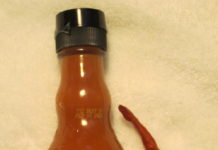
By Alyssa Vandiver and Ashley Phan; Farnsley Middle School (Louisville, KY)
Teacher: Marsha Buerger
Most of us have heard that dark chocolate can benefit your health because of the amount of antioxidants in it. However, many younger people prefer the sweet milk chocolate than the bitter dark chocolate. In a quick survey of middle school students at Farnsley Middle School, 51 out of 58 (88%), said that they preferred milk chocolate, while only 7 out of 58 (12%) preferred dark chocolate.
An article by Kati Mora, a registered dietitian, on http://www.fitnessmagazine.com, a website that provides articles about health, exercise, and nutrition, stated that milk chocolate is less healthy than dark because milk chocolate does not contain as many cocoa beans as dark chocolate. Even though milk chocolate does have cocoa solids, it is mixed with more milk solids, sugar, and cream than dark. Cocoa is an important ingredient in milk/dark chocolate because not only does it give the chocolate flavor, but it has antioxidants.
Research published in 2015 by Lisa L. Dean, U.S. Department of Agriculture at North Carolina State University in Raleigh, NC, stated that the amount of antioxidants can be increased without dramatically changing the flavor of milk chocolate and make it almost as healthy as dark chocolate. According to Dean, red skins of peanuts have been found to have high levels of healthy compounds that are similar to the ones that are found in dark chocolate.
Originally, the peanut skin was discarded, but because there was so much of it, the researchers wanted to put it to good use. The researchers took the peanut skins, concentrated them, and experimented with ways to remove the bioactive compounds–a compound that has an effect on living organism, tissue, or cell, according to Wikipedia–from peanut skins and turn them into a powder that can be mixed into other foods and increase their health properties, including antioxidants. These procedures will make milk chocolate have antioxidants at levels as high as dark chocolate.
An antioxidant is a chemical that helps prevent a chemical reaction called oxidation. Oxidation is a chemical reaction which is when a substance combines with oxygen. For example, a hammer rusting or an apple turning brown. Too much oxidation can damage cells, which can lead to illnesses like cancer and heart disease. To stop the chemical from reacting inside the body system, the system needs the daily recommended allowance of antioxidants. Since peanut skin extract has a large amount of antioxidants, it can help increase the antioxidants in milk chocolate.
Because the antioxidants will leave a bitter taste, the researchers working with Dean mixed the chemical along with the peanut skin extract and maltodextrin to make it more acceptable to the taste buds. Maltodextrin is an edible powder that is made from starchy food, such as potatoes and wheat.
In an email to Scijourner from Dean, she stated that the maltodextrin serves two purposes. The first purpose is to use maltodextrin as a “bulking agent.” If using the agent, you can increase the size of the serving and that will help measure it using a spoon or a scale. In this situation, when the extracts of the peanut skin are dried up, they will be hard to weigh because they are light and fluffy, and weighing is very crucial to making food products to get precise results of the outcome.
“The second purpose is to alter or mask the flavor,” Dean stated in the email response. She also said that peanut skin alone tastes very bitter. “By encapsulating it into the maltodextrin, which is slightly sweet, you can eat the extract and not taste the bitterness because, by the time you swallow it, the maltodextrin has not dissolved away.”
The flavor of milk chocolate after adding peanut skin extract and maltodextrin will still taste the same, but to make sure this statement is true, Dean’s team asked 100 volunteers to sample three pieces of chocolate. Eighty percent of the volunteers tasted no difference between the regular and the peanut skin extract mixture chocolate. Twenty percent who said they tasted some extra bitterness are called supertasters, meaning, they are sensitive to bitter flavors. That means a few people will notice whether antioxidants had been added to the milk chocolate.

This work is licensed under a Creative Commons Attribution-NonCommercial-NoDerivs 3.0 Unported License














This is a great article, but try spacing out the words. Some of them looked like they were smooshed together.